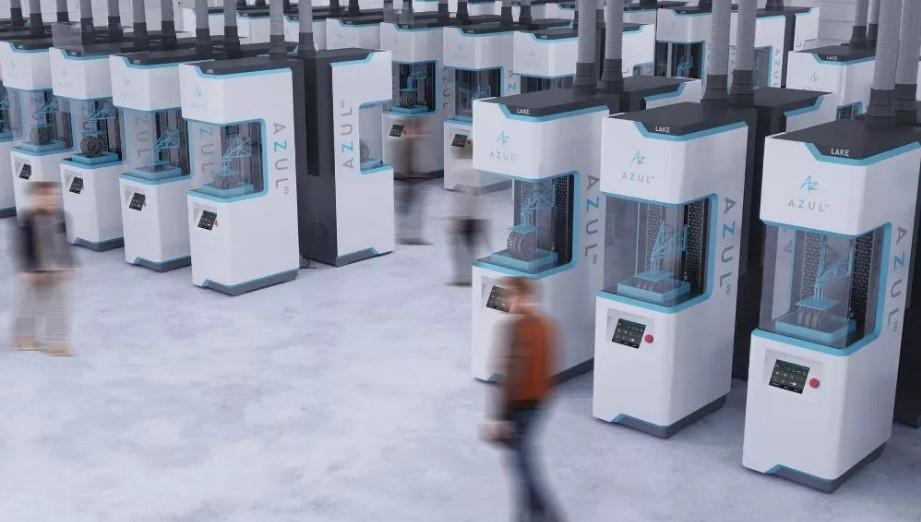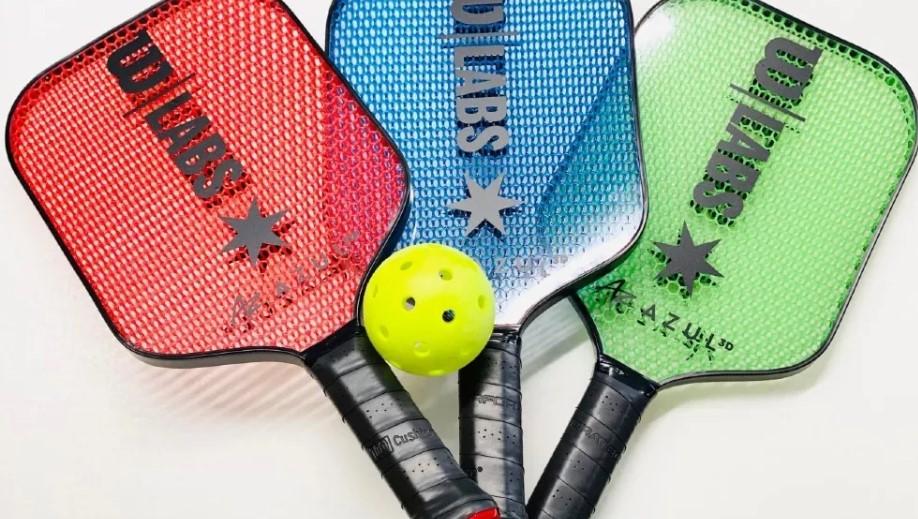- FMA
- The Fabricator
- FABTECH
- Canadian Metalworking
Our Publications
Categories
- Additive Manufacturing
- Aluminum Welding
- Arc Welding
- Assembly and Joining
- Automation and Robotics
- Bending and Forming
- Consumables
- Cutting and Weld Prep
- Electric Vehicles
- En Español
- Finishing
- Hydroforming
- Laser Cutting
- Laser Welding
- Machining
- Manufacturing Software
- Materials Handling
- Metals/Materials
- Oxyfuel Cutting
- Plasma Cutting
- Power Tools
- Punching and Other Holemaking
- Roll Forming
- Safety
- Sawing
- Shearing
- Shop Management
- Testing and Measuring
- Tube and Pipe Fabrication
- Tube and Pipe Production
- Waterjet Cutting
Industry Directory
Webcasts
Podcasts
FAB 40
Advertise
Subscribe
Account Login
Search
3D printer handles sticky situations
The new Lake printer from Azul 3D cures an entire layer of polymer at once
- By William Leventon
- May 23, 2022
- Article
- Additive Manufacturing
A project that started as research into nanoscale 3D printing has become a commercial venture aimed at rapidly printing macroscale polymer products for consumer and industrial use.
The products are made by printers from Azul 3D Inc. The Skokie, Ill., company’s patented printing technology was developed at Northwestern University by a team that included James Hedrick, the company’s co-founder and chief product officer, and Chad Mirkin, Hedrick’s then-PhD adviser at Northwestern and current Azul chairman.
The team was originally trying to make a machine that could produce the world’s smallest 3D-printed parts. The technology chosen for the job was digital light processing (DLP), which uses projected light to cure an entire photopolymer layer at once. In a DLP system, light is projected upwards through a transparent window at the bottom of a resin vat. The light cures a resin pattern on a build plate attached to an arm that moves upwards as a part is created.
Change of Plans
A key to successful DLP printing is minimizing adhesion between the bottom of the resin vat and the part surface pulled upwards by the arm after curing. This is especially important for delicate nanoscale parts that could be destroyed by adhesive forces.
The Northwestern team devised a moving-oil-based system (explained below) that prevents tiny parts from sticking to the bottom of the vat during DLP. The researchers discovered that the interface technology worked for very small parts—and that it also worked well for larger parts that have real-world applications today.
This prompted a dramatic change in their plans. “We realized that the interface we developed would be way more exciting if we took out $100,000 worth of optics for nanoscale printing and put an off-the-shelf projector underneath [the vat],” Hedrick recalled.
DLP is popular among manufacturers because it allows multiple items to be printed in parallel.
With the project taking a more practical turn, the team spun it out of Northwestern and, in 2016, founded Azul with the goal of building printers featuring their technology, called High Area Rapid Printing, or HARP.
Five years later, Azul launched the Lake 3D printer, the company’s first HARP-based printer for manufacturing settings.
Unsticky Notes
HARP uses constantly flowing oil as the interface between the part surface and the bottom of the resin vat. In addition to eliminating problematic adhesion, the flowing oil dissipates the heat produced by curing. Hedrick said this allows a continuous printing process that goes much faster than conventional layer-by-layer DLP printing, which he described as “move up, stop, print, move up, stop, print.”
With the HARP interface, by contrast, “we never stop the reaction. The arm never stops (moving up) and the projector rolls a movie and never turns off.”
As a result, he said, HARP allows print speeds up to 12 vertical in./hr. “When you move from layer by layer to continuous printing, you’re often going 25 to 100 times faster,” he noted. “But you’re also generating a lot more heat that needs to be dissipated. The oil acts as a heat sink to absorb that heat.”
In addition, Hedrick pointed out that HARP allows printing over larger areas than conventional DLP processes. This is because most DLP printers use a film or membrane as their nonstick interface. These interfaces sag too much if stretched over a large area, he noted, which adversely impacts print quality. By contrast, the HARP interface stays perfectly flat—even across distances of multiple feet.
The recently launched Lake printer offers a print bed area of 10 by 12 in. and a print height of 24 in. “We have one of the largest printers out there today, but this will be what we call our ‘baby’ printer,” Hedrick said, adding that Azul plans to introduce other HARP-based printers.
DLP’s Growing Popularity
According to Hedrick, DLP is popular among manufacturers because it allows multiple items to be printed in parallel. Adding HARP’s speed to this inherent DLP advantage gives the Lake printer the highest throughput in the additive manufacturing industry today, he said.
Wilson Sporting Goods case study.
Hedrick added that high throughput is only a baseline capability needed to make 3D printing a competitive manufacturing option. He believes the main reason manufacturing customers have been drawn to Azul is the material variety and properties the company offers. In part, he attributes this to the fact that the DLP printer market has recently attracted an influx of chemists who have expanded the liquid-resin possibilities for the process.
At present, he said, Azul has more than 400 starting-point polymer formulations that can be quickly tuned to meet customer requirements. “If you’re doing something at a manufacturing scale, we can get the materials exactly to what you need.”
About the Author

William Leventon
(609) 926-6447
About the Publication
- Podcasting
- Podcast:
- The Fabricator Podcast
- Published:
- 04/16/2024
- Running Time:
- 63:29
In this episode of The Fabricator Podcast, Caleb Chamberlain, co-founder and CEO of OSH Cut, discusses his company’s...
- Trending Articles
- Industry Events
16th Annual Safety Conference
- April 30 - May 1, 2024
- Elgin,
Pipe and Tube Conference
- May 21 - 22, 2024
- Omaha, NE
World-Class Roll Forming Workshop
- June 5 - 6, 2024
- Louisville, KY
Advanced Laser Application Workshop
- June 25 - 27, 2024
- Novi, MI




























